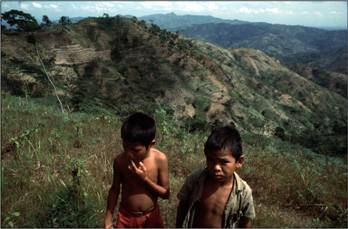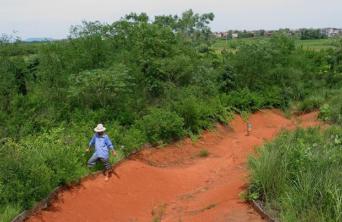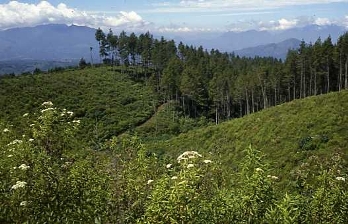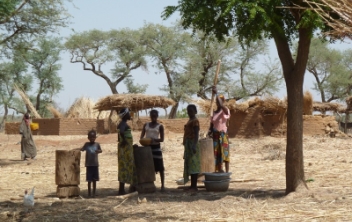ACRES_R3: Key Research Gaps
The following important gaps in knowledge and research questions that may be addressed by ACRES_R3 have been identified (to be extended):
- How do severely degraded (tropical) landscapescatchments function hydrologically? What are the chief mechanisms of storm runoff generation for different combinations of soil type/degradation stage, geological substrate, climate (e.g. rainfall regime) and land use?
- What is the relative importance of (a) the degree/stage of soil degradation, (b) key soil characteristics (texture, water retention, fertility, acidity), (c) rainfall regime, (d) vegetation type, biomass (degree of cover) and functioning (e.g. litterfall and decomposition), and (e) plant/soil biodiversity to the potential for a soil to be rehabilitated? And above all, how to integrally assess these aspects of land restoration?
- What is the role of feed-back mechanisms in the spatio-temporal development of soil-plant interactions in natural, planted or regenerating areas, and how does this affect runoff production and soil formation? What is the role of different spatial plant arrangements in this regard? HSpecifically, how do species composition and vegetation biomass during natural or assisted regeneration control key soil (forming) processes through the quality and quantity of their litter? Notably, how do plant traits control litter accumulation and decomposition?
- How fast do key soil physical attributes (bulk density, water retention, porosity, and hydraulic conductivity including surface infiltration capacity) change after tree planting/ natural regeneration/introducing mixed agro-forestry systems in specific geo-climatic settings? How rapidly do hillslope flow paths change under the respective scenarios and how does hydrological connectivity change over time? What is the effect of using different plant species in this respect?
- How do changes in soil physical/fertility characteristics and vegetation water-use interact to affect catchment-widelandscape-scale hydrological functioning over time? Do planted and naturally regenerating vegetation types differ in this respect, and if so, for how long? Do indigenous species have a different effect compared to exotics (invading or planted) based on conscistent differences in their (leaf) functional traits?
- Can rainfall be increased by large-scale re-introduction of tall vegetation as claimed by some?
- How do rainfall interception losses and soil water uptake (transpiration) change with vegetation restoration over time under different climatic conditions? Are there major differences in the ecohydrological functioning of mature and naturally regenerating systems (indigenous species) versus exotic invaders (often fast-growing pioneer species) and planted trees (indigenous or exotic)? How to explain such differences based on plant functional traits?
- Can groundwater recharge and stream baseflows be enhanced by large-scale regreening measures?
- How can further land degradation be prevented and restoration facilitated through appropriate institutional-economic incentives that promote sustainable land use and discourage destructive forms of land use?
- Farmer-managed re-greening as a coping strategy for combatting (farm-)land degradation by rural households: what is the potential for large-scale uptake taking into account the possible impacts on the ecohydrological and pedological functioning of the agro-ecosystems in question?
- What are the most cost-effective and culturally acceptable governance mechanisms to implement land- and ecosystem restoration programmes in different parts of the worldwide? Will these mechanisms benefit more from using an ecosystem services perspective, a people-centered perspective or some form of co-management?
- Is it possible to design an accounting system capable of incorporating both provisioning and 'final' ecosystem services (such as high quality streamflow) in a quantitative manner such that fluxes of water, carbon, nutrients and sediment are captured in sufficient mechanistic detail to allow their conversion to economically meaningful variables? What is the importance of biodiversity in the maintenance of service provisioning? Will such an accounting system benefit restoration efforts?
- How can ecosystem function providers and beneficiaries be involved best in ecosystem restoration efforts and what long -term incentives can be created to ensure the sustainable use of the restored ecosystem in the long run?
- How can different restoration efforts be coordinated at the landscape level and how can the costs and benefits of ecosystem restoration be shared/distributed best between different stakeholder groups?
- What role is there for 'ecosystem services' related to various forms of land and water usage and how to organize sustainable financing structures to restore degraded land and ecosystems for the provisioning of these services?
- ...
Back to the ACRES_R3 main page





